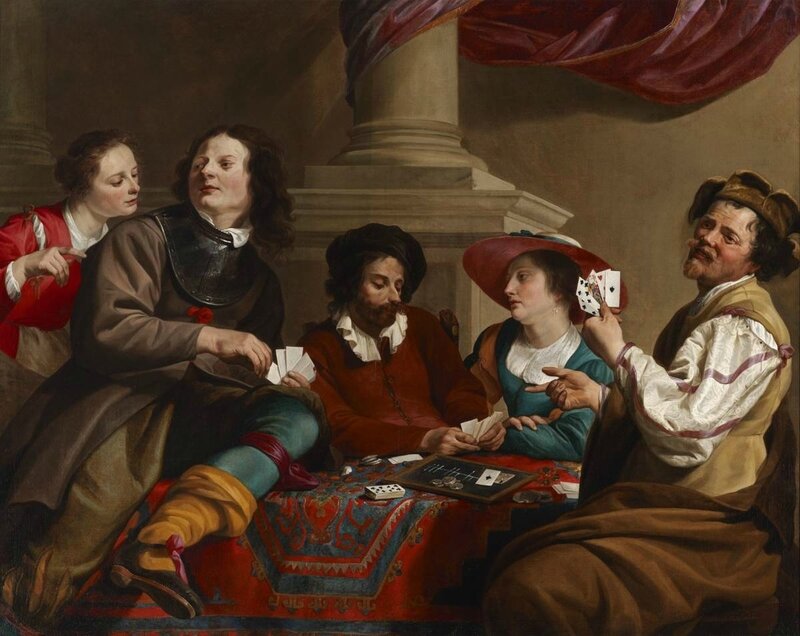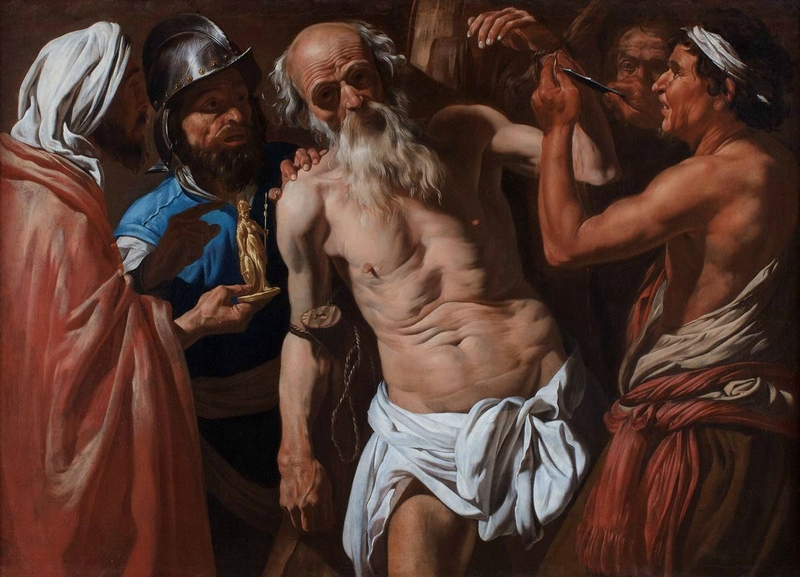![032L17033_84S9Z_uncropped]()
Lot 21. J.M.W Turner, R.A. (London 1775 - 1851), Ehrenbreitstein, Or The Bright Stone Of Honour And The Tomb Of Marceau, From Byron’s Childe Harold, oil on canvas, 93 x 123 cm.; 36 1/4 x 48 1/2 in. Estimate 15,000,000 — 25,000,000 GBP. Photo: Sotheby's.
LONDON.- One of the greatest works by J.M.W. Turner still in private hands will go on view to the pubic tomorrow (Saturday 1st July), prior to being offered at auction on the evening of Wednesday 5th July. Painted in 1835, Ehrenbreitstein is a late work, dating from a period that is widely considered Turner’s best: other works from this time now hang in the world’s greatest museums, with only a minute number of this importance and quality remaining in private ownership. Estimated at £15-25 million(US$18.7-31.2m / €17.3 – 28.9m), the painting will be offered alongside an unusually large group of ten works on paper by the artist (among them an early watercolour of Ehrenbreitstein), making for one of the largest – and certainly the most valuable, offerings of his work to come to the market at any one time.
Ehrenbreitstein
The subject of enormous critical acclaim when it was first exhibited in 1835, the painting depicts the ruined fortress of Ehrenbreitstein near Coblenz – a place of special significance for Turner. Though he made many drawings and watercolours of German views, this is the most important oil painting of a German subject that Turner ever painted.
Often referred to as the ‘painter of light’, Turner is widely regarded as Britain’s foremost artist, whose unprecedented style not only had a profound and lasting impact on British art, but was also a vital precursor to both the Impressionist and the much later Abstract Expressionist movements.
In fact, earlier this year, Turner was confirmed as the new face for the British £20 note, having been voted the country’s most important artist from among the 500 or so names suggested by the British public. Other nominees included Charlie Chaplin, Beatrix Potter and John Constable.
Major works of such astounding quality by Turner are rare on the market. The last example to be offered (Rome, from Mount Aventine, painted in the same year as Ehrenbreitstein and offered at Sotheby’s in 2014) made a record £30.3 million/ $47.6 million – the highest price ever achieved for any British-born artist at auction, and placing Turner alongside Rubens and Raphael as one of just three artists from the preImpressionist era to have achieved prices at this level.
Ehrenbreitstein was originally painted for the illustrious publisher John Pye as the basis for a large single plate engraving – one of the important series of large prints by which the artist established this contemporary celebrity. Pye had anticipated the artist would produce a watercolour, but Turner was so engaged with the beauty and symbolic resonance of the place that he felt he could only do justice to its scale and grandeur in oil. What he delivered to Pye – much to the latter’s frustration - was this magnificent 93cm x 123cm full Royal Academy exhibition oil painting. Translating a painting of this size and complexity was was not an easy task, taking some eleven years to complete, with a number of terse exchanges between the artist and the publisher along the way.
The painting was subsequently acquired by the man who would become one of Turner’s greatest patrons, Elhanan Bicknell. On his death in 1863, Bicknell’s vast collection, including this painting, was dispersed at auction, generating huge excitement and achieving sensational prices. Since then the work has appeared only twice on the market, most recently in 1965, when it achieved a price of £88,000, setting a new world record for a work by the artist.
![turner-1]()
Employees of Sotheby's auction house pose with Ehrenbreitstein by British painter J.M.W Turner during a photocall to promote the forthcoming sale at Sotheby's auction house on June 30, 2017. NIKLAS HALLE'N / AFP
![turner-2]()
Employees of Sotheby's auction house pose with Ehrenbreitstein (C) by British painter J.M.W Turner and smaller works during a photocall to promote the forthcoming sale at Sotheby's auction house on June 30, 2017. NIKLAS HALLE'N / AFP.
Ten watercolours by the artist
![174]()
Lot 174. J.M.W Turner, R.A. (London 1775 - 1851), The West Entrance Of Peterborough Cathedral. Watercolour over pencil; signed lower right: JW Turner 1795, 312 by 228 mm. Estimate: £10,000-15,000. Photo: Sotheby's.
Executed when Turner was twenty years old, this exquisite watercolour depicts the Cathedral at Peterborough, following the artist’s tour of the Midlands and North Wales in 1794.
![175]()
Lot 175. J.M.W Turner, R.A. (London 1775 - 1851), Kilchern Castle, With The Cruchan Ben Mountains, Scotland – Noon. Watercolour over pencil, heightened with stopping out and scratching out, 625 by 957 mm. Estimate: £150,000-250,000. Photo: Sotheby's.
Turner exhibited this monumental work at the Royal Academy Exhibition of 1802 when he was twenty-seven years old. Turner’s wonderful handling of light and atmosphere makes this work both mesmerising and ahead of its time, encapsulating Turner’s technical brilliance and supreme ambition. In 1813, the work was purchased from the artist by Sir William Forbes, in whose family it has remained to this day, largely hidden from public view.
![176]()
Lot 176. J.M.W Turner, R.A. (London 1775 - 1851), All Saints Church, Isleworth. Watercolour over pencil; inscribed verso, in a later hand: This belonged to the late Philip H [ardwick], 274 by 385 mm. Dated 1789. Estimate: £10,000-15,000. Photo: Sotheby's.
Executed when Turner was just 14, this work was commissioned by British architect Thomas Hardwick to capture the village of Isleworth, which lies on the River Thames in present day West London. Both this work and the following lot (177) have not appeared in public since their sale in 1920 and exemplify Turner’s extraordinary talent at a very young age.
![177]()
Lot 177. J.M.W Turner, R.A. (London 1775 - 1851), St Mary's Church, Wanstead. Watercolour over pencil; inscribed verso, in a later hand: This belonged to the late Philip Hardwick. Oval; 299 by 422 mm. Estimate: £10,000-15,000. Photo: Sotheby's.
Capturing St Mary’s Church in Wanstead, London in 1789, this watercolour was also painted by Turner for his tutor, Thomas Hardwick. Hardwick was commissioned to build a new church in 1787, to replace the medieval structure shown here.
![180]()
Lot 180. J.M.W Turner, R.A. (London 1775 - 1851), Lake Como, Looking South, Possibly From The Foot Of The Cliffs At Ca' Bianca, Italy. Grey wash over pencil, 236 by 365 mm. Estimate: £12,000-18,000. Photo: Sotheby's.
![181]()
Lot 181. J.M.W Turner, R.A. (London 1775 - 1851), Lake Como, Looking North To The Village Of Bellagio, Italy. Grey wash over pencil, 237 by 336 mm. Estimate: £12,000-18,000. Photo: Sotheby's.
The watercolours shown side by side below capture two views of Lake Como in Italy. The works date to the mid-1790s and are believed to have been painted at Dr Thomas Monro’s ‘Academy’ in London, which played a crucial role in Turner’s development.
![182]()
Lot 182. J.M.W Turner, R.A. (London 1775 - 1851), View From Ehrenbreitstein, Germany. Watercolour and bodycolour over pencil, heightened with scratching out, 200 by 317 mm. Estimate: £150,000-250,000. Photo: Sotheby's.
In this superbly preserved watercolour, Turner has positioned himself on the approach to Ehrenbreitstein Fortress in Germany, one the artist’s most iconic subjects (see above). Unlike in his later oil painting, here Turner uses the ‘lofty hill as a window onto the dramatic landscape below’. The watercolour was executed during Turner’s seminal sketching tour of Europe in 1817.
![184]()
Lot 184. J.M.W Turner, R.A. (London 1775 - 1851), Malmesbury Abbey, Wiltshire. Watercolour over pencil, heightened with bodycolour, stopping out and scratching out, 288 by 414 mm. Estimate: £200,000-300,000. Photo: Sotheby's.
Dating to circa 1827, this work captures Malmesbury Abbey in Wiltshire on a glorious summer’s morning. Here we see Turner working at the very height of his creative powers, his sense of colour and the refined combination of pinks, yellows, greens and blues anticipating the palette used by the great masters of French Impressionism.
![191]()
Lot 191. J.M.W Turner, R.A. (London 1775 - 1851), Lichfield Cathedral, Staffordshire. Watercolour over pencil, heightened with bodycolour, stopping out and scratching out, 287 by 436 mm. Estimate: £300,000-500,000. Photo: Sotheby's.
In this large watercolour, which dates to circa 1832, Turner presents the viewer with a rich, dramatic and complex composition. A combination of molten reds, oranges and golds emulate those of an early evening sunset, as threatening blue clouds create the illusion of an approaching storm. Turner juxtaposes the majestic solidity of the medieval cathedral with the ephemeral nature of British weather.
![192]()
Lot 192. J.M.W Turner, R.A (London 1775 - 1851), Rhodes, Greece. Watercolour over pencil, heightened with pen and red ink and bodycolour, 128 by 200 mm. Estimate: £70,000-90,000. Photo: Sotheby's.
Through a combination of light, colour and fine detail, Turner brings the port of Rhodes in Greece to life. This watercolour is one of twenty-six works that Turner drew between 1833 and 1836 for Finden’s Illustrations of the Bible. Upon studying the series, 19th century English art critic, John Ruskin, described the paintings as ‘quite unrivalled examples of his richest executive power on a small scale’.











































































